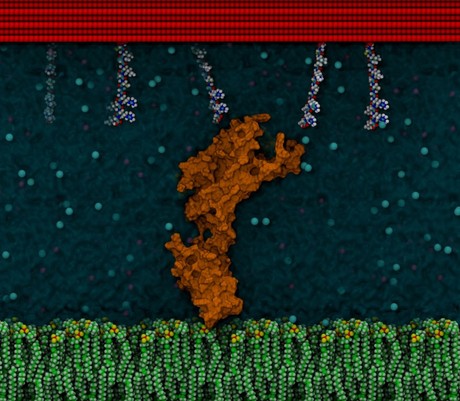Electric fields + peptides = better implantable device integration

University of Sydney researchers have made a discovery that could help implantable devices better integrate with the body, thus reducing risk of infection. Their work has been published in the journal Nature Communications.
Modern medicine increasingly relies on implantable biomedical devices, but their effectiveness is often limited because of unsuccessful integration with host tissue or the development of untreatable infections. This necessitates replacement of the device through revision surgery.
According to Professor Marcela Bilek, corresponding author on the new study, biomaterial coatings can mask these implanted devices and mimic surrounding tissue. “The Holy Grail is a surface that interacts seamlessly and naturally with host tissue through biomolecular signalling,” she said.
Robust attachment of biological molecules to the bio-device surface is required to achieve this, as enabled by unique surface modification processes developed by Professor Bilek. She explained, “Although proteins have successfully been used in a number of applications, they don’t always survive harsh sterilisation treatments — and introduce the risk of pathogen transfer due to their production in microorganisms.”
In collaboration with Dr Behnam Akhavan and PhD candidate Lewis Martin, Professor Bilek is exploring the use of short protein segments called peptides that, when strategically designed, can recapitulate the function of the protein. Because of their small size (less than 10 nm), the peptides can be produced synthetically and are resilient during sterilisation.
The main difficulty in using peptides is ensuring they are attached to device surfaces at appropriate densities and in orientations that effectively expose their active sites. Using applied electric fields and buffer chemistry, the researchers discovered several new levers that control peptide attachment.
Charge separation on peptides was found to create permanent dipole moments that can be aligned with an electric field, like that delivered by a small household-sized battery, to provide optimal orientation of the molecules. The amount of peptide immobilised can also be tuned by the electrostatic interactions when the peptides have an overall charge.
“We used specialised equipment to perform the experiments, but the electric fields could be applied by anyone using a home electronics kit,” noted Martin.

Dr Akhavan said improved implants could be available to patients within five years, assuming the researchers receive industry support and funding for clinical trials. He noted that the team’s approach would have wide-ranging applications, from bone implants to cardiovascular stents and artificial blood vessels.
“For the bone implantable devices, for example, such modern biocompatible surfaces will directly benefit patients suffering from bone fracture, osteoporosis and bone cancer,” he said.
The researchers wrote in the study that their discovery is now being used to design strategies to create a new generation of synthetic biomolecules. They said, “Our findings shed light on mechanisms of biomolecule immobilisation that are extremely important for the design of synthetic peptides and biofunctionalisation of advanced implantable materials.”
High-potency cannabis use leaves a unique mark on DNA
Frequent users of high-potency cannabis have changes in genes related to mitochondrial and immune...
Scaffold-based method for culturing antitumour bacteria
Bacteria-based cancer therapy represents an exciting new treatment option — but in order to...
mpox vaccine appears safe and effective in adolescents
Interim analysis of an mpox vaccine trial has found the vaccine is safe in adolescents and...




